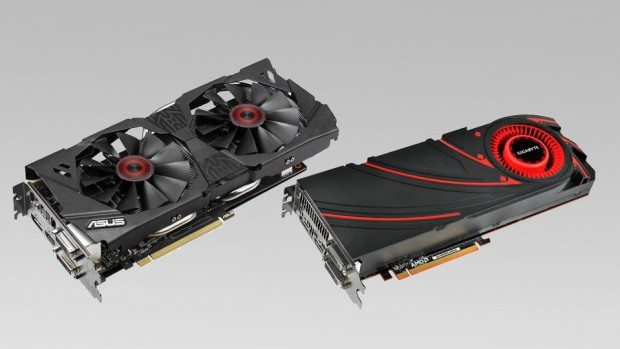Graphics Card Buying Guide Spring 2015
Rikki Wright / 9 years ago
I never want to see under 60FPS at 1440p

1440p is the new ‘standard’ gaming resolution, with most gaming monitors offering this resolution at a peak. The issue with 1440p is not that it is more pixels to render, but most monitors have an increased refresh rate from 100hz to an incredible 144hz; meaning that not only do you have more pixels to render, but you have to render them quicker as well. If you are looking to play at 60FPS, then a refresh rate of 60 or 120hz would be best. The gap starts to close at this resolution between both companies, so lets see what’s best to buy.
- Core Clock: 1000MHz
- Processing Core: 2816
- Memory: 4GB GDDR5
- Memory Clock: 5000MHz (Effective)
The R9 290x is currently the flagship single unit graphics card offered by AMD. Out of the box it has very strong performance, but the technology is ageing. Luckily we should start to see new AMD graphics cards enter the market from the R9 300 series. Performance offered from the R9 290x is very good, it can run 1440p resolution games at high pre-sets without a sweat.
- Core Clock: 1051MHz
- Core Boost Clock: 1178MHz
- Processing/ CUDA Cores: 1664
- Memory: 4GB GDDR5
- Memory Clock: 7010MHz (Effective)
This is NVIDIA’s Achilles heel. It is an amazing graphics card, but in the early days of production it was found that the new memory architecture used was slightly flawed. This meant that 3.5GB of the VRAM was incredibly fast, but the last 512mb was incredibly slow; if you were gaming below the 3.5GB threshold, the performance offered would only be slightly less than the GTX 980. This is a highly recommended graphics card and probably the best bang for buck graphics card on sale today.



















